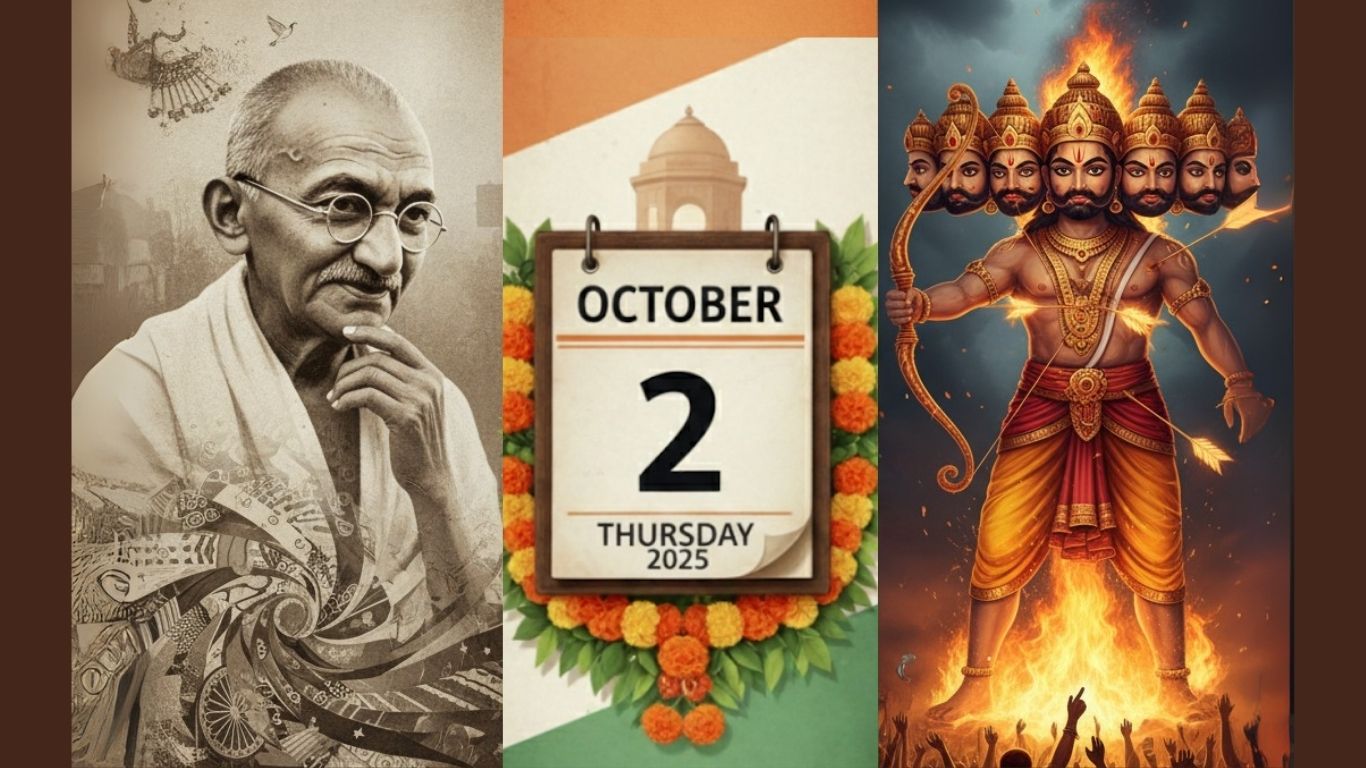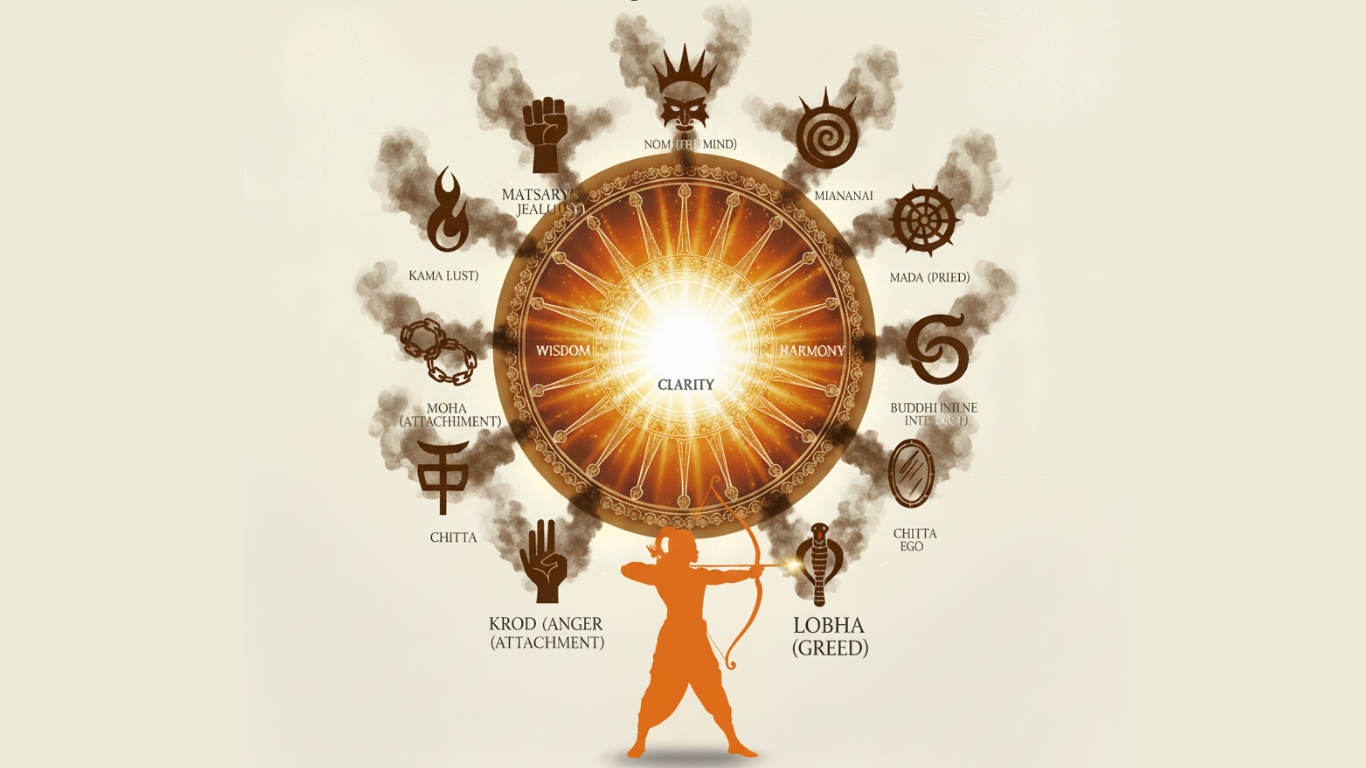
In a remarkable twist of the cosmic calendar, two of India’s most profound observances are set to converge on a single day: October 2, 2025. This year, Gandhi Jayanti, the birth anniversary of the Father of the Nation, Mahatma Gandhi, shares the date with Dussehra (Vijayadashami), the festival that celebrates the victory of Lord Rama over the demon king Ravana.
This isn’t just a scheduling coincidence; it’s a powerful alignment of ideals. It’s a day that invites us to reflect on two different, yet deeply connected, forms of victory. One is the victory of external evil through force and righteousness; the other is the victory of internal darkness through truth and non-violence. This convergence of Dussehra and Gandhi Jayanti in 2025 is truly history in the making, offering a unique moment for national and personal reflection.
To understand the significance, we must first understand the calendars. Gandhi Jayanti is fixed according to the Gregorian calendar on October 2nd every year. Dussehra, also known as Vijayadashami, however, is determined by the lunar cycles of the Hindu lunisolar calendar. It falls on the tenth day of the bright half (Shukla Paksha) of the month of Ashvin.
The last time these two dates aligned was in 2020, making the 2025 convergence a significant and relatively rare event. Such alignments happen every few years, prompting us to look beyond the routine Dussehra celebrations and delve into the deeper connection between these two pillars of Indian culture.

Dussehra, or Vijayadashami, marks the culmination of the nine-day Navratri festival. Its core narrative is the epic battle between Lord Rama (the embodiment of virtue) and Ravana (the symbol of ego and evil). The burning of the towering Ravana effigy is more than a spectacle; it is a symbolic act. It represents the destruction of the ten heads of Ravana, which symbolize ten negative qualities:
Vijayadashami is an external celebration, a communal reminder that good, no matter how challenged, will ultimately triumph over evil.
Mahatma Gandhi, born on October 2, 1869, took the ancient Indian concept of Ahimsa (non-violence) and forged it into a powerful political weapon: Satyagraha, or truth force. His battle was not against a mythical demon king, but against the very real demons of colonial oppression, social injustice, and discrimination.
Gandhi’s victory was not won on a battlefield with arrows and swords, but in the hearts and minds of millions through peaceful protest, civil disobedience, and an unwavering commitment to truth. If Dussehra's victory is dramatic and conclusive, Gandhi’s victory was gradual and transformative. He fought the "Ravana" of hatred with the "arrow" of love, and the "ego" of empire with the "shield" of self-reliance (Swadeshi).
This is where the magic of this dual celebration of Vijayadashami and Gandhi Jayanti in 2025 lies. While the methods differ, the underlying philosophy is strikingly similar. Both events are, at their core, about the triumph of light over darkness.
This rare 2025 convergence is an opportunity to move beyond ritual and integrate the profound lessons of both Vijayadashami and Gandhi Jayanti into our lives.
In a world often divided by conflict and hatred, the simultaneous celebration of Gandhi Jayanti and Dussehra (Vijayadashami) in 2025 is a potent reminder. It teaches us that the fight against evil—whether it manifests as external injustice or internal weakness—is perennial. It shows us that victory can be achieved both through the courage of a warrior and the resilience of a peacemaker.
This October 2nd, 2025, is more than a public holiday; it is a day of dual inspiration. It is history inviting us to learn from both our ancient epics and our modern history, guiding us toward a future where truth and righteousness prevail.
For more insightful content on Indian culture, history, and meaningful living, stay connected with ExploreRealNews.com. Follow us on facebook, Instagram, Linkedln and twitter for Astrology tips that matter to you.
Gandhi Jayanti is fixed on October 2nd annually in the Gregorian calendar, while Dussehra (Vijayadashami) follows the lunar Hindu calendar. In 2025, the tenth day of Ashvin month (Vijayadashami) coincides with October 2nd, creating this rare convergence that last occurred in 2020.
This convergence symbolizes the powerful connection between two forms of victory: Dussehra represents the victory over external evil (Ravana), while Gandhi Jayanti celebrates the victory over internal and social evils through truth and non-violence. Both festivals emphasize the triumph of light over darkness.
The last convergence occurred in 2020. Before that, it happened in 2011. These alignments typically occur every few years due to the differences between the solar Gregorian calendar and lunar Hindu calendar systems.
You can celebrate by:
Both emphasize victory through righteousness - Dussehra shows victory over external evil (Ravana) through physical strength, while Gandhi demonstrated victory over oppression through truth and non-violence (Satyagraha). Both ultimately represent the triumph of good over evil and truth over falsehood.